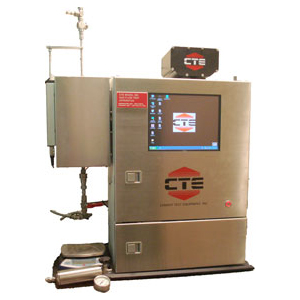Gas Migration Apparatus
Gas migration during drilling or well-completion procedures has long been understood to be one of the most difficult problems of the petroleum industry. Gas migration is defined as the invasion of formation fluids into the annulus owing to a pressure imbalance at the formation face. During the start of the cementing operation, immediate gas migration may occur if the hydrostatic-pressure overbalance against the formation pressure is weakened. In other words, if the hydrostatic pressure in the annulus falls below the formation gas pressure at any time, a gas release may occur and lead to an irreversible gas entry process. At the end of the primary cementing operation any gas migration that may occur is called short-term gas migration. This type of gas migration occurs during the setting period of the cement that usually lasts from minutes to days. During this period it is believed to be the loss of annular pressure that contributes to the occurrence of gas migration. Factors that contribute to the loss of annular pressure include fluid loss, gel strength development, and chemical shrinkage of the cement during hydration.

